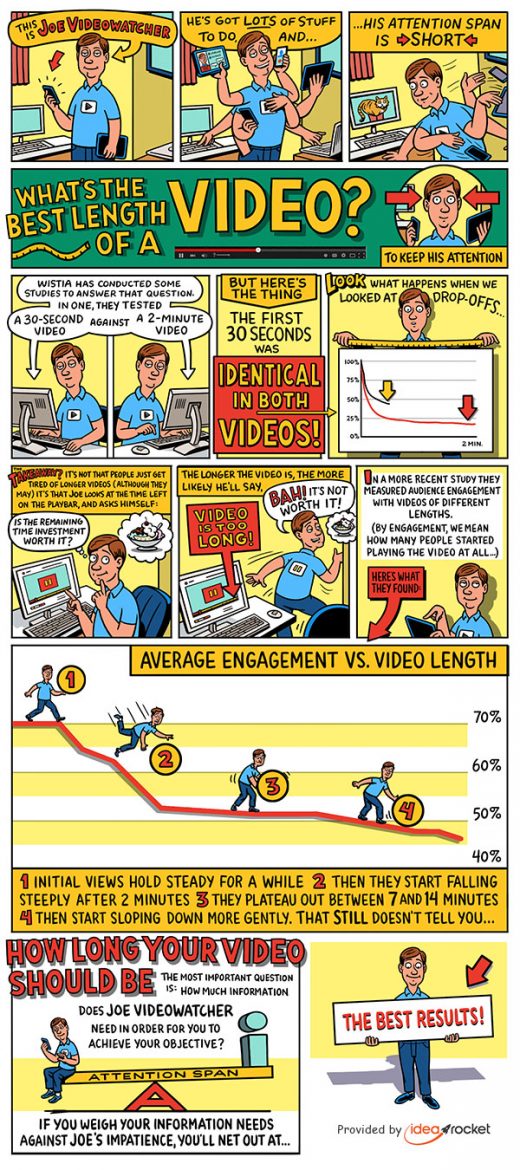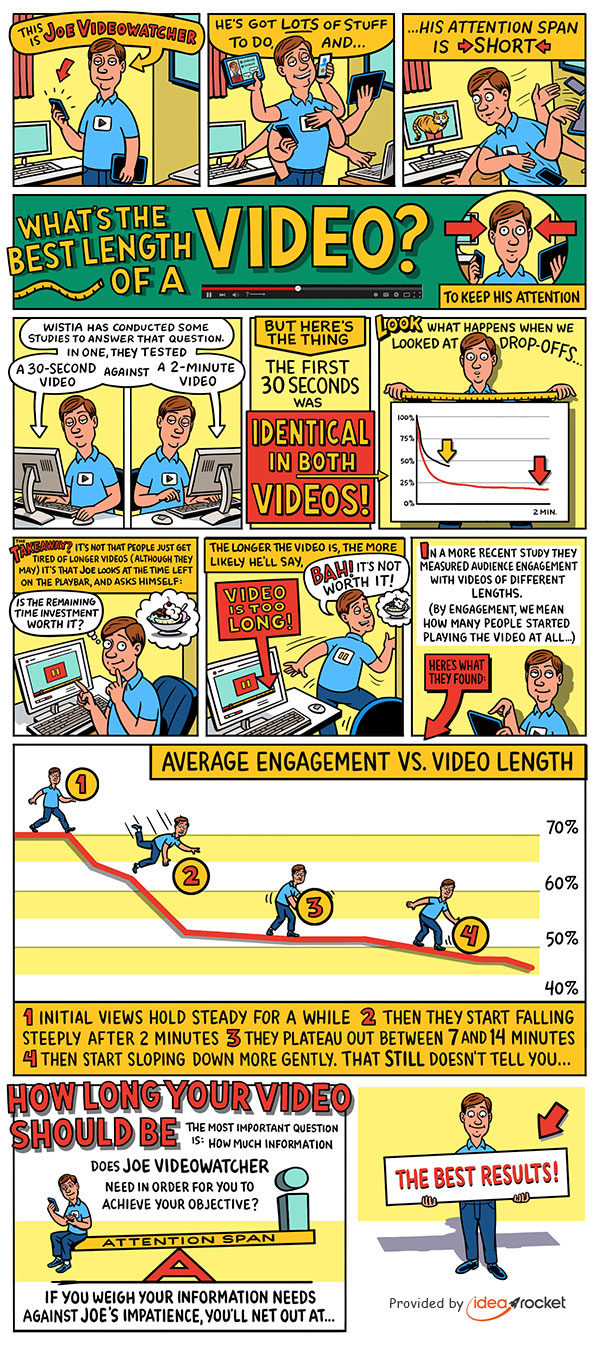Mobile Video Is Here. Is Your Video Ready For 2017?
— December 20, 2016
A lot of things happened in 2016 (I think there was an election?), but one of the biggest developments was the fact that mobile video finally became the dominant way that people watch online video. Add in the dramatic increase in video traffic, and it’s easy to see why mobile video will be a huge part of any video marketing strategy in 2017 and beyond.
The Internet is Already Mostly Mobile Video
Dozens of video marketing sites and stats proclaim the rise of mobile video, but the most compelling data comes from the world’s largest online video provider: YouTube.
YouTube recently released statistics showing that “more than half of YouTube views come from mobile devices.” That’s huge, especially once you consider YouTube’s massive user base of more than 1 billion people (that’s roughly 1/3 of the entire internet, by the way). People prefer mobile video, but the shift to mobile is about a lot more than hip millennials.
Mobile Video for B2B
Video has become fundamental in the B2B buying process. Seriously.
In the 2016 Think With Google study titled “How Video and Mobile are Changing the B2B Buying Process,” director Richard Robinson spells out the importance of mobile video:
“In the B2B buying process, we’re seeing a huge increase in the number of people using video—going from 29% of B2B buyers only two years ago to 70% of B2B buyers today.”
That’s an enormous jump. Decision makers are watching video, and that video is increasingly viewed on mobile devices.
Robinson argues in the same study (which features a great 3-minute video), that “video, alongside mobile, has the strongest impact on increasing consideration rates during the B2B buying process.”
He’s basically saying that mobile video is a pillar of the B2B buyer’s journey.
“Ok, video is everywhere, and it’s getting more mobile. I get it. But how do I make my videos more effective at reaching my target viewers?” you may ask.
Great question. The answer is simple: Make better mobile videos.
Below are three guidelines to help you optimize and update your videos. Embrace mobile and outshine competitors, reach new prospects, and keep current customers informed of the next big thing. It’s easier than you think.
Mobile Videos are Short
We’ve talked about optimal video length before, but it bears repeating—shorter is better. ”60-90 seconds,” is the sweet spot for explainer videos, according to the video obsessed geniuses at Wistia.
Shorter videos—ideally under 2 minutes—have higher engagement rates, and that goes double for mobile video. Mobile viewers decide whether to watch something or not based solely on length—especially explainer videos. Complex, detailed videos, while more informative, don’t reach as many viewers.
Brevity and focus are the new benchmarks of mobile video. Strictly adhere to a tight timeframe will almost single handedly help you make videos people want to watch—even on the go.
Mobile Videos are Focused
People expect near instantaneous solutions to complicated problems. It’s counterintuitive, but that’s just the way we are now. Tailor your explainer video to meet these expectations by removing fluff and condensing mobile videos down to their base parts.
Robinson (from Google), again stresses the importance of relevance in quality video. “You need to really understand what information your customers are looking for and then engage them in the right video format.”
Explainer videos only work if you can keep your viewer interested all the way through, so don’t bog the viewer down with multiple points and convoluted story lines. Find the narrative or product feature that you want to highlight and maintain laser tight focus on that singular message.
Complicated videos don’t translate well to mobile devices. If your video is too complex to condense it down, simply split it into multiple videos that each highlight one facet of a problem or feature. Your mobile viewers will only watch the videos that apply to them and thank you for the sleek, digestible videos.
Mobile Videos Don’t Need Audio
Most mobile viewers don’t give a damn about sound.
While the right soundtrack or quality voiceover can make or break a product video or explainer video, the truth is, many mobile viewers don’t listen to audio at all. Optimize your mobile video to be audio independent with clear visuals that communicate the message without sound.
Closed captioning is one way to get around “audiophobic” viewers, but a more effective tool to capture and keep mobile viewers is arresting animation. Animation literally shows instead of tells the story or explanation better than dialogue heavy “talking heads” ever can.
Mobile Video: The Future is Now
Mobile video is already making an impact from YouTube to B2B buyers. Embrace the inevitable and prepare your video marketing strategy for the benefits of a mobile optimized approach.
Invest in quality production now and ensure that your video ends up on your customers’ screens—both big or small.
Digital & Social Articles on Business 2 Community
(14)







